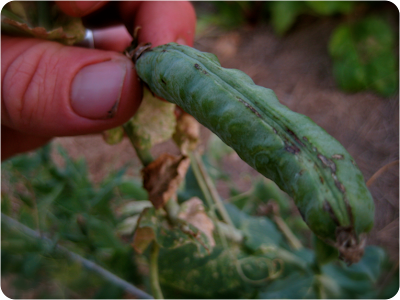GROUND CHERRIES.
I'm not sure what NPR program we were listening to this spring––perhaps Splendid Table, a personal favorite––but they were focusing on heirloom seeds. They brought up a plant we'd never heard of as a fun, easy one to grow: ground cherries (also known as husk cherries). In the seed catalogs we found they were basically tomatillos only smaller and sweeter so we ordered a packet––with visions of wine or curious salsa's––and were really pleased with the results (though we sadly never made it to the wine idea... this year).You would need quite a few to really make a large batch of anything, but we've enjoyed throwing them in sautés and salads. The other day we even roasted a handful––á la salsa verde––with some jalapeño and garlic which indeed proved quite tasty. It's hard not to agree with the radio program's reason for promoting ground cherries, as well, that they would make an entertaining garden project for a family. Popping a fresh, sweet fruit out of a small paper-like sack could be a fun activity for children. Heck, it's fun for adults––we can attest!- Jesse.

SAVING TOMATO SEED.
If you bust open a tomato and examine the juices you'll notice thousands of tiny seeds floating around. All those seeds have a small, visible sack around them which prevents each from germinating inside the tomato. What's required to render the seed viable and remove the sack, and what makes Hannah and I particularly fond of saving tomato seed, is a little bit of fermentation.You see, in order to save seed on almost any plant, all that's necessary is to imitate what nature does. How, you must ask yourself, would this plant reproduce in nature? For tomatoes, they rely on the fruit to mature, fall from the plant, rot on the ground and re-seed. That, in essence, is what you have to replicate!So here's how we do it:Take two very ripe heirloom tomatoes of the same variety and crush the seeds and juices into a jar (basic red tomatoes are generally hybrids and will not give you seeds true-to-type––you will get plants...but they will be a mystery). Use two tomatoes for a little diversity, but choose healthy tomatoes from the most productive plants. If you like the shape or size or color of a certain tomato....choose that one!Add a tablespoon or two of water to the cup with the seeds. Stir a couple times a day for a few days. It will smell, be prepared! After three days or so––don't go much over four days––remove seeds by using a strainer or cloth and rinse them. Lay seeds on a lid or plate––not paper, as it will stick––and let them dry. Then? Place them in a baggie and freeze them. Et Voila!Every one of our heirloom tomatoes plants this year are from seed we saved last year. That's an exciting feeling, not only knowing you chose what kind of tomato to grow, but everything about it!- Jesse.
 |
| (some of last year's heirlooms....that are currently growing in the garden!) |
COMMENCE THE SAVINGS.
The other day while working in the garden, Jesse made a curious discovery….FRUIT on our potatoes! Little green fruit growing above ground! After doing a bit of research, we learned that this is the seed of the potato plant. Since potatoes are generally planted by using….more potatoes….we sort of just assumed that potatoes just come from potatoes that came from other potatoes, and so on. But no! You can start them from seed! So of course we are completely obsessed with this idea and currently have a cup of bubbling, fermenting seeds on our kitchen counter. Each fruit contains multiple seeds... it also looks like a baby tomato (being in the nightshade family, and all) and is quite similar to the process of saving tomato seeds. We are excited about trying this out. Apparently, EACH seed will be its own, specific variety of potato. Amazing!
Along with the potato experiment, we are soon-to-be collecting and saving seeds from the flowering broccoli and overripe, wrinkly peas in the garden. This method not only saves us the money from buying seeds next year, but it helps us to learn more about the entire process of growing, and starts us the path to having our own varieties of vegetables….passed down year after year after year. We are working our way towards having a different kind of family heirloom to share with the future Frost generations.
- Hannah.
















